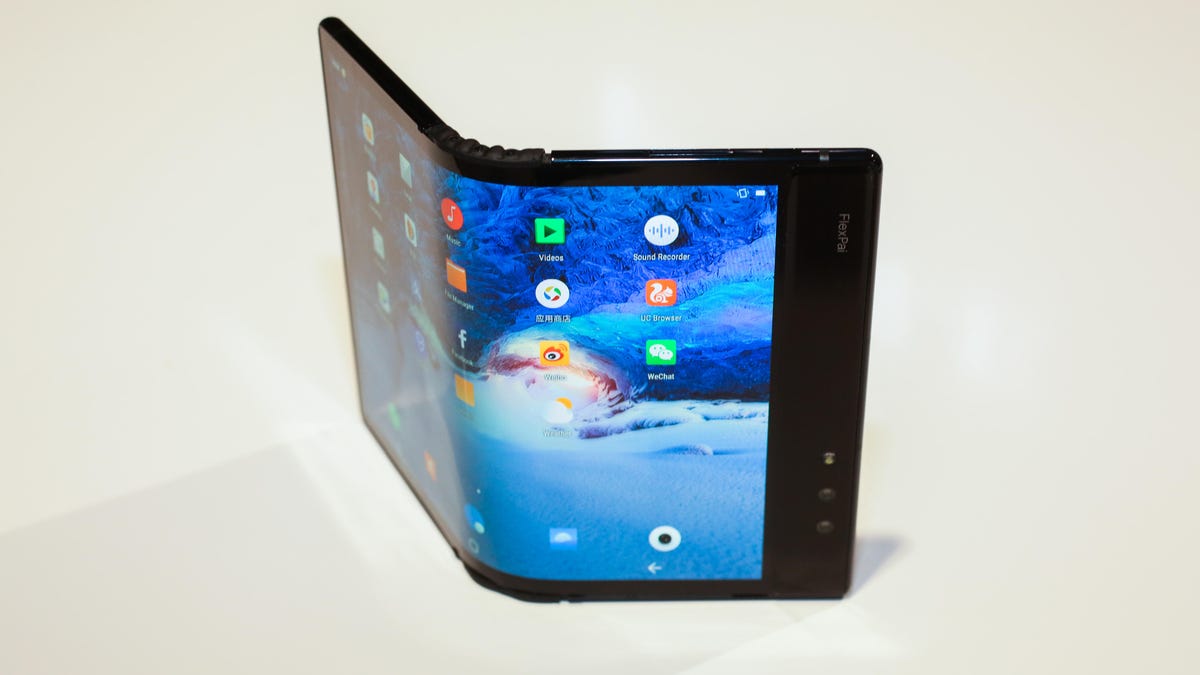CES 2019: I just bent a smartphone in half without breaking it, and it was glorious
The Royole FlexPai may not be a great phone, but it sure is fun to fold in half

Every time I pick up a new smartphone, tablet or gadget, I suddenly develop a mild case of sadism. "I bet I could snap this thing in half," I think to myself. I never do, but that overwhelming urge to bend expensive technology in on itself never goes away. At CES 2019, I finally encountered a gadget that could bend to my destructive will: The Royole FlexPai . The world's first foldable phone.
The idea of a bending, foldable smartphone display has been something the tech industry has been chasing for years, but none of the prototypes or wild concepts created in the pursuit of the flexible phone have made it to market. At least not until now. Shortly after Samsung showed off its latest bendable display prototype, Royole revealed the FlexPai, telling CNET in November that it wasn't a concept. It wasn't a prototype. It was a real phone that was already for sale in China.
Now, that same device is making the rounds at CES 2019 -- and while it wasn't the first time the bendable phone has graced the pages of CNET, it was the first time our most destructive prone editor got their hands on it. So, after years of resisting the urge to snap my favorite tablet in half just to see if I could make it bend, I finally lived the dream. I folded the FlexPai in half. Quickly. Violently. It was immensely satisfying -- and when I was done, the tablet was perfectly fine.
That, it seems, is half of the phone's selling point. Yes, the FlexPai's foldable display allows it to transform between phone and tablet form factors, but it also means that the device is less susceptible to screen damage. The flexible, plastic screen won't crack or shatter in the way a glass display would, to the point that Royole calls it "virtually unbreakable." That kind of durability is certainly appealing. Unfortunately, the phone experience isn't.
The Flexpai is technically an Android 9 device, but to make Google's OS play nice with the phone's unique display, Royole had bake in a some heavy tweaks. The resulting experience is called "Water OS," named for the way icons seem to flow across the screen as it's unfolded. At least, that's how it's supposed to work -- in practice, the phone often glitched out and changed apps as I unfolded it, the result of the screen reading my fingers on the opposite side of the fold as I bent the device.
On the other hand, there's a true delight in the FlexPai's namesake feature. The plastic that encases the phone feels a little cheap, but the gimmick itself doesn't. The bright AMOLED display looks stunning no matter which way you bend it.
All told, the world's first flexible phone is a very mixed experience. There's a cathartic joy in being able to bend the device any which way, but it feels like an incomplete experience. It's not a prototype, but it doesn't feel like a device that's fully ready for market, either. That's probably why Royole is only releasing it internationally as a $1,318 developer kit -- hoping to attract developers interested in what might be the future of flagship smartphones .
CES 2019: Every story so far: See all of CNET's coverage of the year's biggest tech show.
CES 2019 schedule: It's six days of jam-packed events. Here's what to expect.

